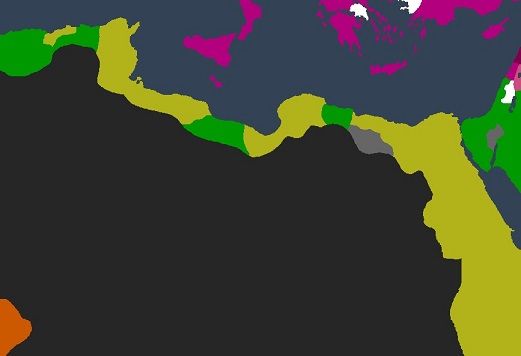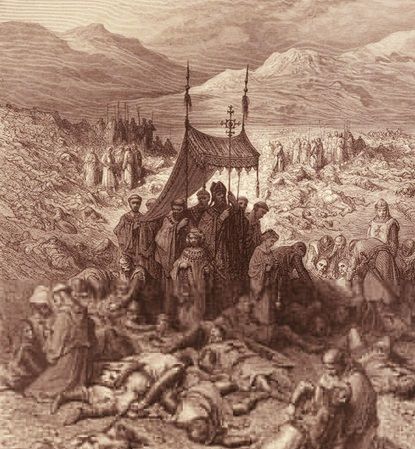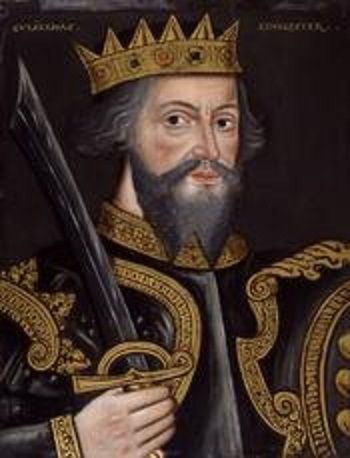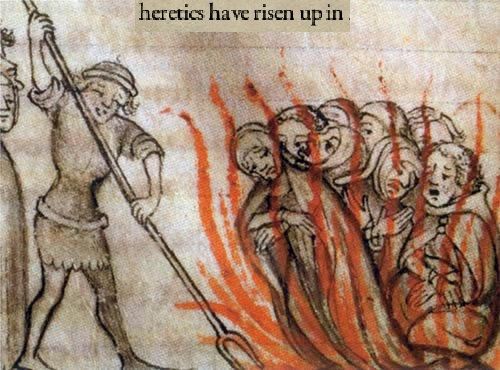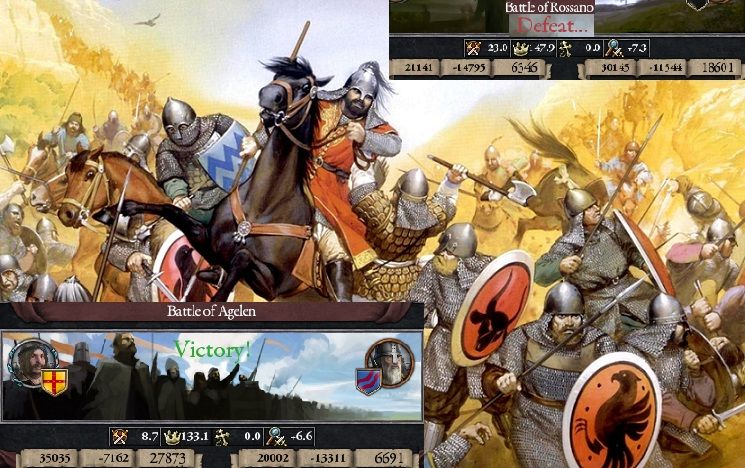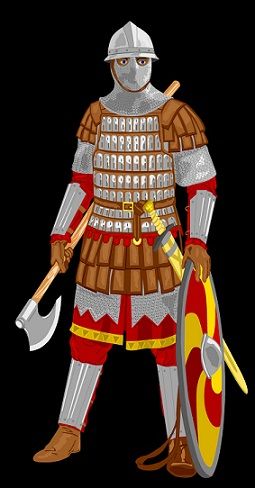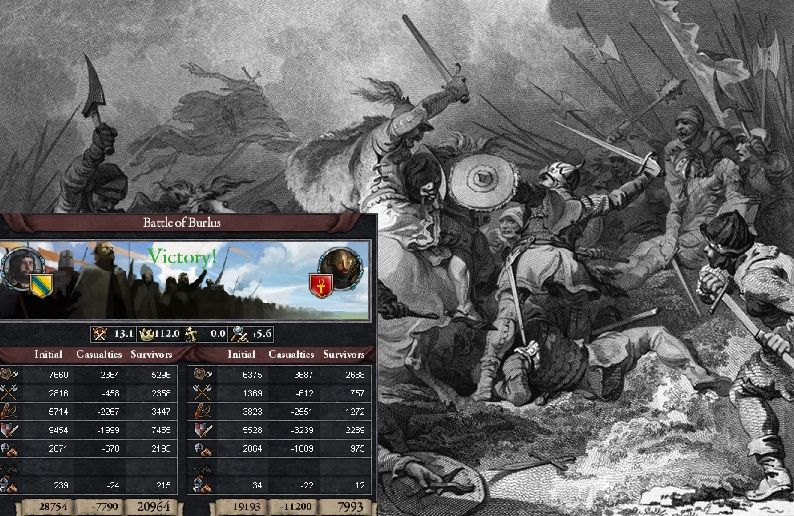Alfgeir II, the Ill Ruler, Hranesson af Munsö
Lived: 1018-1080
King of Egypt, Africa, Abyssinia, Jerusalem and Nubia: 1040-1080
King of Italy: 1067-1080
Head of House af Munsö: 1040-1080
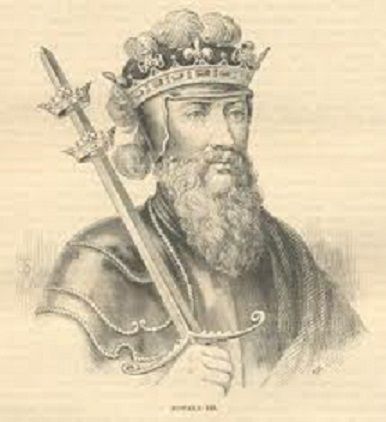
Alfgeir II is a man whose legacy has been savaged by history. On the face of it a strong monarch who held together a huge realm under great pressure – even making the impressive addition of the Kingdom of Italy – he was unpopular with virtually every section of society from the common people through the nobility, mercantile elite and clergy. Moreover he is despised by Catholic and looked down upon by Orthodox Christians. His epitaph as the ‘Ill Ruler’ is a harsh indictment of his rule, but almost inevitable considering his lack of supporters in any meaningful section of society.
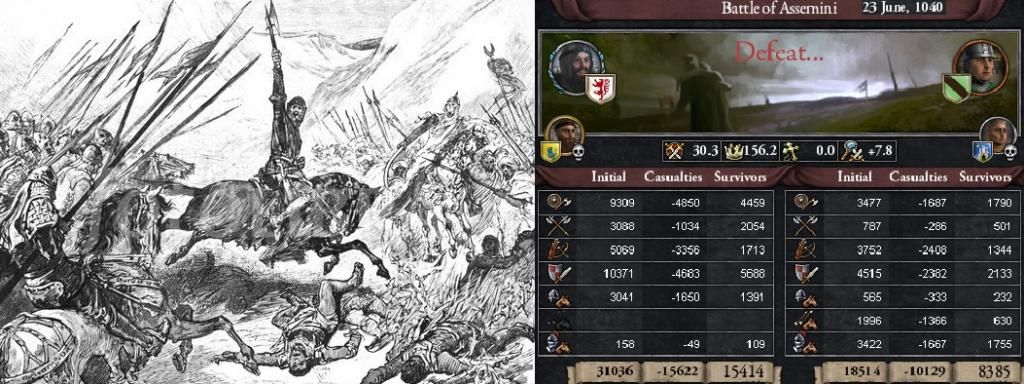
Alfgeir II was instantly thrown in at the deep end as he took power in 1040. A couple of weeks into May the Byzantines landed a large army in Southern Sardinia, garnering support from the lords of Egypt’s Western provinces they encouraged a large rebellion that saw a large swathe of Egypt’s nobility rise against her King. Hoping to put out a show of strength in the face of the rebellion, and tip the balance of the war with Byzantium in Alexandria’s favour – Alfgeir moved with a tremendously large force to confront the Romans in Sardinia near a small town called Assemini. With almost twice the number of men as the Byzantines Alfgeir should have been confident in victory. Instead Assemini turned out to be an unmitigated disaster. Half the Egyptian army was lost, the Jarl of Tunis (one of the King’s key supporters) was slain and Alfgeir II was humiliated. Despite the fact that the Egyptians were able to regroup and launch a second invasion of Sardinia to retake the island later in the year, the damage had already been done. Following Assemini the rebellion began to spread like wildfire across large sections of the Egypto-Norse realm. With this threat to deal with Alfgeir threw in the towel – surrendering Jaffa to the Byzantine Emperor in early 1041.
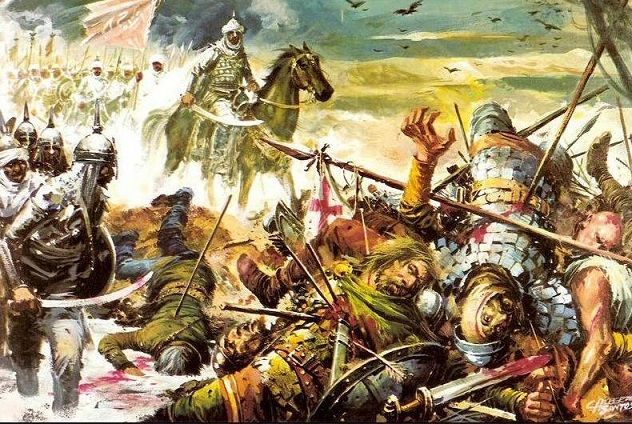
With the war with the Romans wrapped up Alfgeir moved to confront the internal enemy. However, with the losses suffered already the rebels were able to field more troops than the crown – an intolerable situation. But help was at hand; luckily for Alfgeir he had inherited a treasury bursting with gold, which he used to recruit an army of Moorish mercenaries – now without a vocation following the end of a series of civil wars in Andalucia – with which to crush his enemies. It took until 1043 for the rebellion to be finally quashed - the final act that convinced the last rebel leaders to stand down their arms was destruction of the city of Genoa, formerly a major economic centre in Italy the city would never recover from the desolation inflicted upon it in 1043, soon Alfgeir’s power was once again recognised throughout the realm.

Soon after the conclusion of the Civil War that had followed the conflict with the Byzantines, Alfgeir embarked upon an ambitious campaign of expansion in Italy. In 1044 the small country of Piombino was captured from a rebellious French landowner and granted to the Republic of Pisa (the city being groomed as a defender of monarchical interest in Italy).
Far more significantly, in 1045 the great city of Rome was conquered. Without warning Alfgeir had gone to war with the Papacy and seized Rome – shortly afterwards the Pope himself was expelled from the city and ransomed to the King of France (thereafter being little more than a puppet of the French King after being settled in Southern France). With the Catholic Pope gone Alfgeir appointed a stooge as the Patriarch of Rome, although officially subservient to the Coptic Pope in Alexandria, Alfgeir hoped to weaken the overbearing power of the clergy by setting up the Roman Patriarchate as a means of dividing Papal power. The Roman Patriarch was given authority over all of Western Europe (in practise this was limited to lands under Egyptian rule in Italy) where the liturgical language was to remain Latin rather than Coptic Egyptian which was used elsewhere.
Obviously, the seizure of Rome had serious political consequences beyond Egypt’s borders as well. In the Catholic world it led to a crisis of confidence amongst the Latin Christians, leading to a shattering of the Church. In Spain Lollardry and in Lotharingia Catharism would come to become the two largest heretical movements amongst the Latins – effectively ended Catholic power in these regions. Meanwhile, other heresies – notably the Fraticelli of Brittany, Provence and Ireland – also became significant within decades. It would take Catholicism around a century to recover from the loss of Rome and the severe defeats that followed.

The collapse of the last great Carolingian realm in the 1040s, coupled with the Northward advance of the Andalucian Caliphate, marked the other great disasters for Catholicism that so damaged the faith in the 11th century. In 1045 the Kingdom of Germany, Bavaria and Italy had descended into civil war amongst competing claimants. Byzantium and Egypt soon took advantage as members of the House of Macedon (the Roman Imperial family) were placed upon the thrones of Germany and Italy in 1046 and 1047 respectively – leaving the Carolingians with nothing but Bavaria. Whilst the Byzantine Emperor’s uncle became King of Germany it was his sister who was to take the Italian throne, however his sister was no ally of Constantinople but the mother of Alfgeir – thus making Egypt’s King heir to Italy as well. Alfgeir’s mother, Eustathia, instantly faced the rebellion of her new vassals against her rule – leading Egypt into involvement in an Italian Civil War that was to last until 1057.

With relatives on the thrones of Germany and Italy, control over three of the five Patriarchal seats, the largest army in the known world and more power than any Emperor since Justinian Emperor Kallinikos I had taken Byzantium to the pinnacle of its Medieval power. With not even Egypt able to compete the Romans ruled the world’s greatest Empire. This dominance would not last. Upon the great Emperor’s death in 1052 the Empire fell into a long series of civil wars that would cripple it and prevent, the Romans from pressing their advantage over Egypt. In 1053 Alfgeir moved to take the town of Hebron, just a short distance from Jerusalem, whilst in 1057 Jaffa came back under Egyptian control as the Jarl of Tunis captured the city.

Alfgeir finally scored the military triumph that wiped away the shame of Assemini in 1064 as he personally commanded an Egyptian army to victory over a large Arab army. The victory ended an attempted Arab reconquest of the Levant before the war had ever really got underway, peace being agreed before the end of the year.

Elsewhere, Alfgeir’s mother finally passed away in 1067 at the impressive age of 72 – seeing the King of Egypt inherit the Italian throne. Although his mother had waged several expansionist wars after the end of the attempts to unseat, Alfgeir soon organised a series of small scale campaigns that lasted until 1070 – seeing the Kingdom of Italy expand noticeably in size.

After a period of peace in the 1070s Alfgeir took the opportunity to massively expand Egypt’s frontier Eastward into Syria and Arabia, even capturing the city of Damascus, as the Abbasid Caliphate fell into Civil War. It was the final victory for Alfgeir before the tensions that had built up over the course of his rule came to their inevitable conclusion in Civil War.

Simply looking over Alfgeir’s achievements from the outside it is difficult to see how the memory of Alfgeir as ‘the Ill Ruler’ can be justified – after all, following defeat to the Byzantines – he had noticeably increased Egyptian power in the Middle East and Italy. Yet, within Egypt he had set a country against himself. The clergy, and the Papacy especially, had been angered by his attempts to meddle in their affairs and use the new Patriarchate of Rome against them, not to mention his demands for larger contributions of men from ecclesiastical lands in times of war. The common people (and indeed all sections of society) were alienated by his arbitrary exercise of justice, whilst corruption ran rampant at every level of society. Alfgeir’s attempt to play the clever statesman by increasing the power of the city of Pisa and building it up as a rival to the Republic of Cyrenaica (which in turn gave him leverage to place tolls on Cyrenaica’s trading operations) failed spectacularly. Pisa’s loyalty was never truly guaranteed (they would in fact take part in the rebellion against him at the end of his reign) whilst the previously loyal Cyrenaican Republic was turned into an enemy. Meanwhile the nobility regarded him as a tyrant who wanted absolute authority over his vassals, stamping upon every ancient right of the nobility – in Italy there was the added religious and cultural dimension as a largely Catholic Italo-German nobility were naturally anti-monarch.

Four decades of misrule had set Egypt against its King – when Civil War broke out in early 1078 it was hardly a surprise. What was a shock was the scale of the uprising as an absolute majority of the lords of the realm turned against their King. Everywhere from Abyssinia through the Levant, Italy, North Africa and even traditionally secure Egypt proper saw the outbreak of war. Across the realm conflict raged. Within two months Alfgeir had to withdraw his forces from Italy, by the end of 1078 Tunis had fallen and early the next year Tripoli was also lost. Effectively abandoning the Western parts of his realm Alfgeir grouped his armies in Egypt where a large rebel army had settled into a siege of Damietta. As the loyalist army assembled in Alexandria the rebels at Damietta awaited battle – fearing that the swelling numbers of the loyalists (who again benefited from the large scale recruitment of foreign mercenaries) might defeat them in battle and tip the balance of the war against the rebellion.

Alfgeir II’s father had died on the field of battle, if anything his own death was far more spectacular. In March 1080 Alfgeir finally left Alexandria on the road to face down the rebel army in the Delta once and for all. En route he had stopped at an inn with a small retinue – little did he know that one of his close advisors, Mayor Gunnar of Marabout, had in fact betrayed him. Shortly after the King settled down Gunnar and several others quietly slipped away – the inn had been rigged to explode as a makeshift fertilizer bomb had been set up. Gunnar’s fiery betrayal incinerated the King; the rebels might have hoped that this would be the end of the war. They would be badly mistaken.




